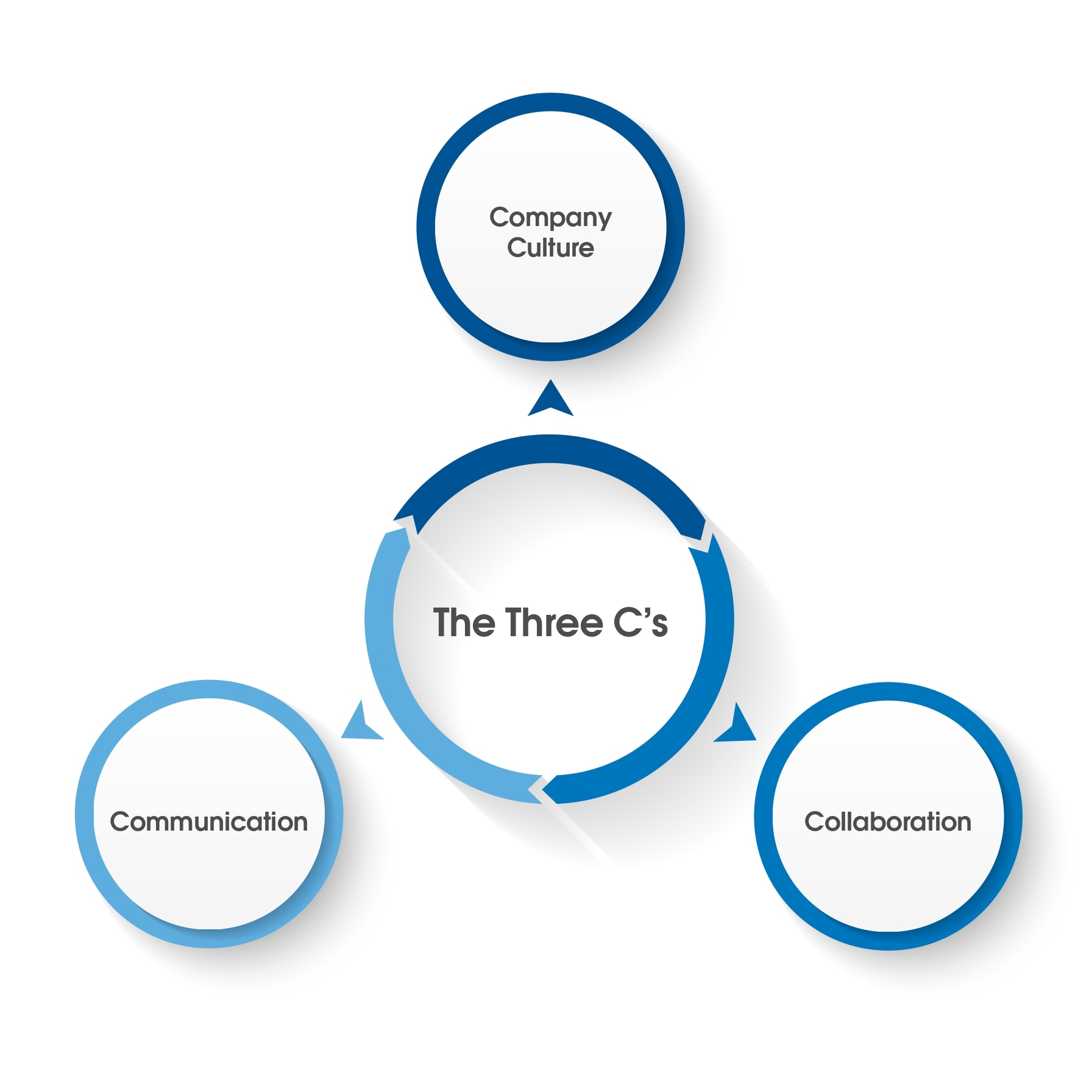Why You Should Use the Three Cs Systems Approach to Pharma Remediation

The need to break the cycle of failure
A company facing a laundry list of observations at the end of any regulatory inspection will react with great energy and purpose to fix each one. This reactionary approach will lead to disappointment when the next regulatory inspection reveals additional examples of the same or similar problems. It can rapidly become a repetitive cycle of failures resulting in chronic quality system/GMP non-compliance. This happens when the company focuses on the symptoms rather than the underlying causes, i.e., the systems. If the underlying systems are not corrected, inspection after inspection will identify examples of the same system weaknesses.
The need for a systems-based approach
Following a systems approach to remediation, combined with some fundamental key success factors, will ensure success. The value of a systems approach to corrective actions is recognized globally; MHRA and FDA recommend a quality systems approach. Correcting specific findings without correcting the underlying causative system is analogous to treating symptoms rather than curing the disease. A systems approach is not a controversial concept and many who are caught up in the “findings/company fix/findings/company fix…cycle” from one inspection to the next believe they are taking a systematic approach. They focus on fixing specifics or elements of underlying systems without regard to the causes of the problem. This superficial approach assures failure.
A robust quality system, primarily, provides assurance of high-quality products. An additional benefit is assurance of regulatory compliance. A company that prides itself in having a comprehensive, sustainable quality system distinguishes itself from one whose objective is to comply. The latter fails to capitalize on the business advantages deriving from a quality system. Creating a compliant quality system can be achieved by addressing the subsystems of the quality systems.
Key to success factors: company culture, communication and collaboration

Over years of performing a variety of large to small-scale remediation projects, we have found several key success factors. We are highlighting three factors that will always assure a positive, successful, and sustainable outcome -- the “Cs to success”:
- Company Culture
- Communication
- Collaboration.
These three key indicators are not easy to implement, but they should always be factored in early on and as part of the remediation plan. The analogy is a three-legged stool: If the stool loses one of its three legs, it will not stand properly. Likewise, the three Cs are equally important to the success of the remediation and without all three in place, the likelihood of success is marginal.
A remediation plan that applies a systems-based team approach with collaboration and communication can itself have a positive effect on culture, but a concerted effort must be made by management to assure alignment of values with the remediation activities. This can be very difficult.
The importance of company culture
At the heart of any successful remediation should be the requirement to align a company’s organization to a common vision from which it can establish a robust remediation that meets regulatory requirements and is in support of the company’s business strategy. The values reflected in the company’s organization and support systems impact behaviors that influence the way the remediation activities are executed.
However, if organizational values are not coordinated with the vision, remediation plan and principles, then the remedial solutions (such as establishing, revising, and modifying procedures) and in some instances processes may get changed. But the behaviors of personnel may not, resulting in a compliant system on paper but not in actual practice. In this situation, any remediation/system corrections that are made will not be sustainable. In addition, how employees are incentivized, rewarded, compensated, promoted, etc. influences behaviors. Sometimes little attention is given to the behavioral impacts and how they can affect remediation efforts. Management must lead by example. If they do something different from what they say, this sends clear messages to the organization that certain behaviors are tolerated, expected and/or permitted. During any remediation this will result in an organization at odds and in conflict.
Understanding the significance of the issues
Before remediation activities commence, personnel must understand the significance of the issues with respect to the regulation. They must first learn about basic regulatory terminology, requirements, and expectations. Personnel should receive comprehensive training on regulations, requirements, and approaches for personnel. The training should include an introduction to pharmaceutical law, management responsibility and basic pharmaceutical GMP/quality systems requirements, and the fundamentals of building a quality system. The structure of the training should highlight the regulatory expectations, current industry practices (i.e., “best practices”) and address domestic and international regulatory requirements. The program should be structured to ensure that employees absorb the material and incorporate the training into their responsibilities.
Communication
Communications must be planned, measured, consistent, and managed to assure clarity, effective conveyance of key ideas, and consistent support of ongoing development. Providing the necessary attention to organizational culture can speed the process of remediation, as well as assure its ultimate success.
To implement sustainable organizational improvements, communication is required so that members of the organization have a common understanding of why change is required of them and the organization. Both initial and ongoing communication should convey the remediation plan and the strategy for the remediation, what it will entail, and the expectation for the personnel directly impacted as well as those support functions sitting on the periphery.
The remediation playbook
To help communicate the plan, a charter, and a remediation playbook should be developed. The charter defines roles and responsibilities, team structure, and scope of work. The remediation playbook establishes a common understanding and agreement among the team involved in the remediation and the standardized approach of how to conduct the work required in the remediation. The playbook also provides the general parameters and structure for the remediation, including:
- Core project team structure and membership
- A kick-off meeting with the teams to provide an overview of the core team process and all the phases of the project.
- Define overall project goals, scope, and critical success criteria
- Define key project, phases, deliverables, and milestones
- Define the project team organization and governance structure
The steering committee
Overseeing the entire project is the Steering Committee which may be called the leadership team, management team, etc. It consists of the senior managers representing the various functional areas of the company along with a third-party senior management expert for objective regulatory assistance. This team sets the vision, provides the necessary resources and commitment, assures linkages between the various teams, serves as the change agent for cultural and system issues and resolves issues that invariably surface during the project. It also affords visibility of senior management’s quality commitment.
Collaboration
Collaboration is essential for any organizational change. Building the relationship with team members and the client is paramount to a successful remediation outcome. Establishing a quality system that meet a company’s regulatory and business needs is challenging enough and, in most instances, requires a third-party expert to help companies address the quality systems issues. The quality system itself can take months if not years to remediate and a company in such a situation can develop a successful approach if it recognizes the value of a collaborative systems approach. This will have an impact on the organizational culture and lend itself to a group of people who constructively explore ideas to search for effective, efficient, and compliant solutions. A company that does not embrace collaboration puts the organization at a disadvantage and at risk. The more a team collaborates toward a common goal, the better the working relationship, resulting in open sharing, discussion, and consensus on solutions.
Pharma remediation resources
NSF’s team of industry experts and ex-regulators has written and presented extensively on their experiences of working on successful remediation projects for companies all around the world. Here are five of our most-read articles on the topic:
A study of the pharma industry’s GMP remediation projects reveals a lot about us and our inability to focus only on what is truly valuable.
Develop an action plan for responding to statements of non-compliance, including warning letters and FDA Form 483s. Incorporate our practical remediation solutions into your overall quality system for long-term, sustainable compliance.
NSF supported a UK-based pharmaceutical manufacturer to address issues that resulted in an MIA suspension. This case study outlines our work to help restore the MIA, returning the client to full manufacturing.
What should a company do when they receive a warning letter from the FDA? Find out in our expert webinar.
How can we help?
NSF’s team of experts can help your company in many ways.
We can assist you with a pre-inspection audit to help you to get ready for an inspection from a regulatory authority.
Our training team works with companies around the world to drive improvements in human performance.
The NSF Pharma and Biotech consulting experts support companies throughout the product lifecycle and have extensive experience in supporting companies that have received warning letters from regulatory authorities.
Our experts can work with you to determine the best plan for you and your company. Simply complete the form below and one of our expert team will get back to you to start a conversation about how NSF can help you and your company.
How NSF Can Help You
Get in touch to find out how we can help you and your business thrive.

What’s New with NSF

NSF Granted Reauthorization as a CMMC Third-Party Assessment Organization
January 8, 2025
Sustainable Foods Summit 2025
January 2, 2025
NSF Celebrates 50 Years of the Safe Drinking Water Act
December 16, 2024